Art World
A Powerful New Exhibition Organized by Fondation Cartier Sheds Light on the Art and Activism of the Amazon’s Indigenous Yanomami People
The thought-provoking, color-saturated show is a revelatory glimpse into the community.
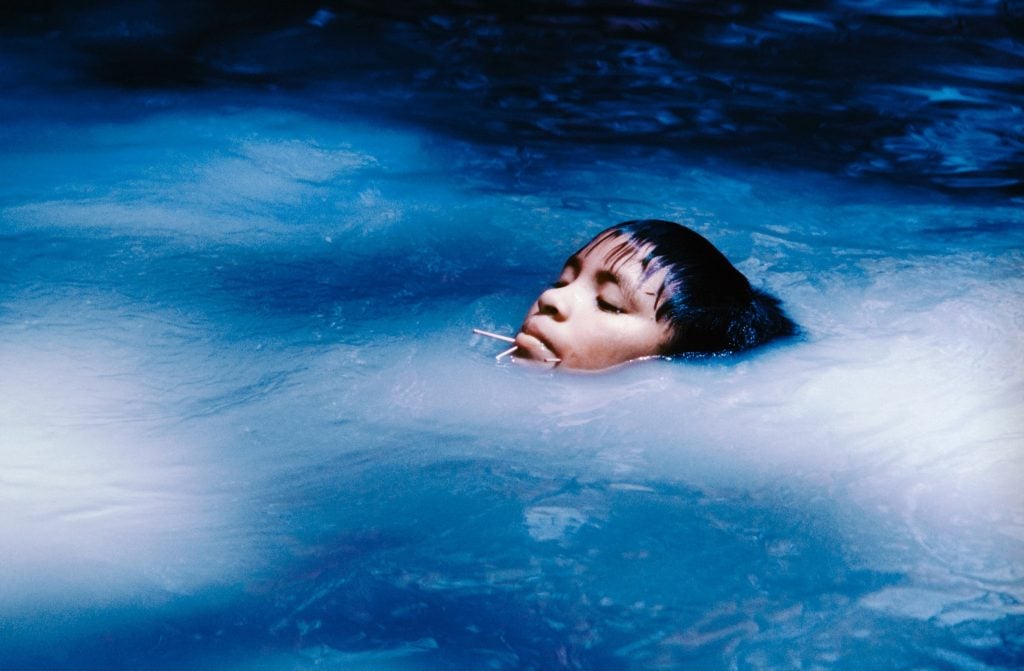
The thought-provoking, color-saturated show is a revelatory glimpse into the community.

William Van Meter

“The Yanomami Struggle,” which opened this week at the Shed in New York, focuses on the Indigenous people of the Amazon and their ongoing fight to survive. Their plight is a universal story and an unflinching meditation on the human condition—both its virtues and its most depraved depths—and the cycles of destruction that define us. At the show’s heart is the power of art to transcend but also its limitations. The show runs through April 16 and is presented by Fondation Cartier pour l’art contemporain.
An estimated 30,000 Yanomami live in territory that extends from northern Brazil to Venezuela. Their existence is threatened by illegal mining. The exhibition opens at a precipitous moment: the Brazilian government has declared a public health emergency and its new president, Luiz Inácio Lula da Silva, has accused his predecessor, Jair Bolsonaro, of committing “genocide” against the Yanomami.
The 91-year-old photographer Claudia Andujar has been chronicling this heart-rending saga for over 50 years. Her remarkable images, almost 200 of them, are the focus of “The Yanomami Struggle.”
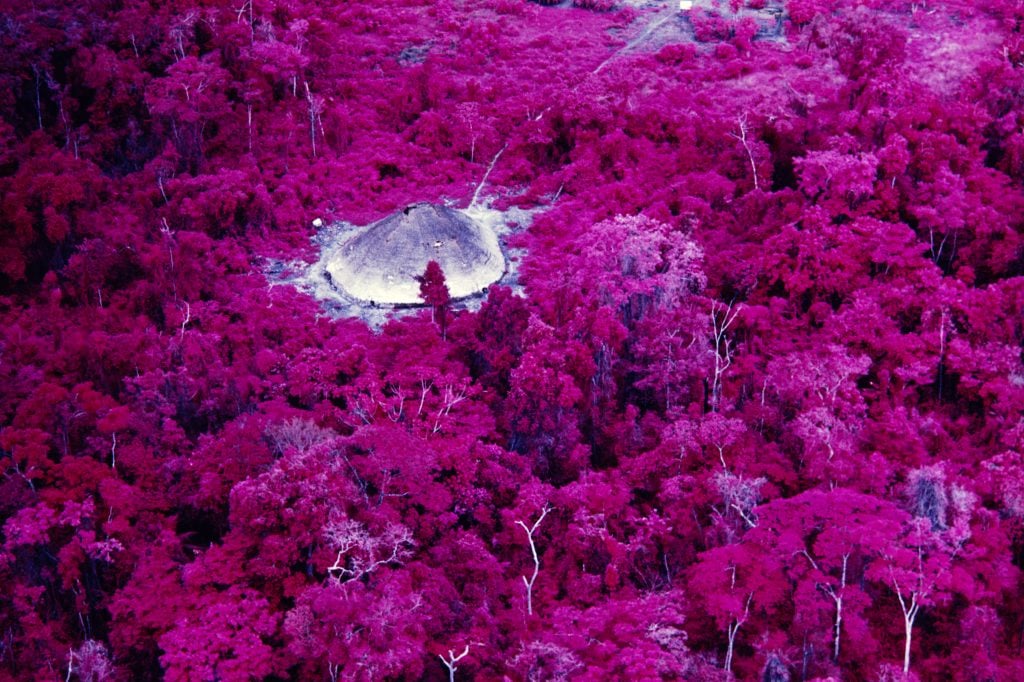
Collective house near the Catholic mission on the Catrimani River, Roraima state (1976). Artwork © Claudia Andujar. Collection of the artist.
The show opens with a window onto paradise, the Yanomami in their world—sans outside influence. Sometimes the color-saturated images seem otherworldly, and it’s not because one is viewing a different culture. She began documenting the Yanomami in 1971 as a photojournalist, but long before that she dabbled in abstract painting.
Her techniques veered drastically from reportage as she began to utilize infrared film and colored filters, even smearing Vaseline on her lens to imbue her images with the feeling of the Yanomami state of mind. One yano, or collective house, lies in a sci-fi field of electric magenta. In another image, she captured a shaman’s blur from imbibing the hallucinogen yakoana to manifest the spirits.
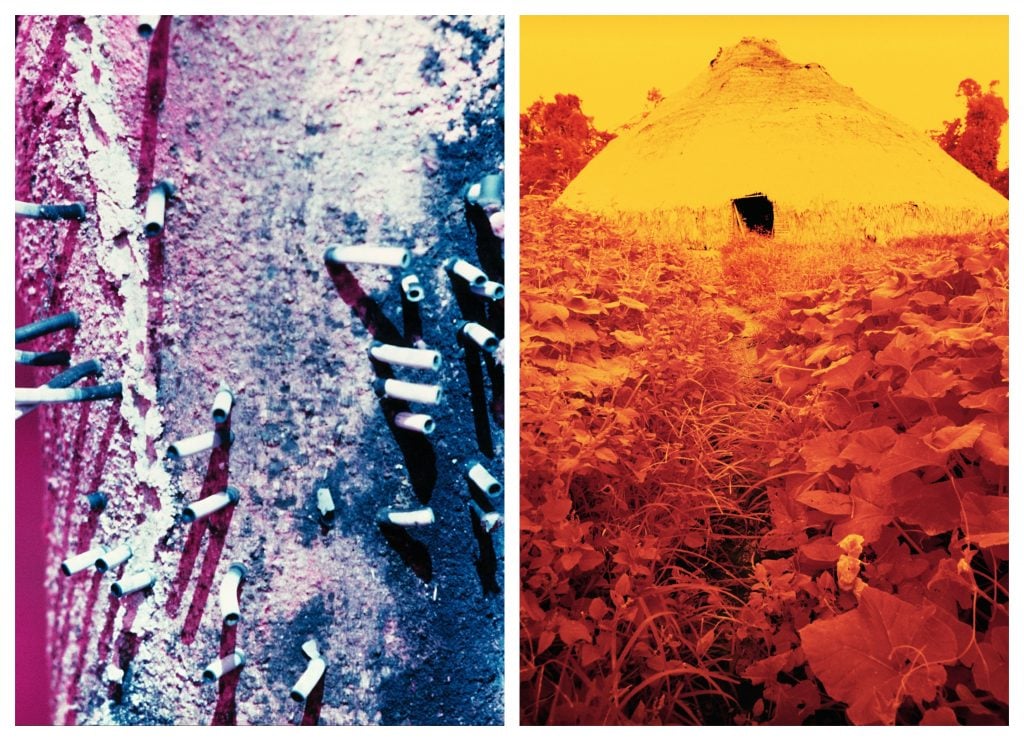
(Left) Tree with fungus, Roraima state (1974–1976). (Right) Collective house surrounded by sweet-potato leaves, Catrimani region (1976). Artwork © Claudia Andujar. Collection of the artist.
“She had to represent things that were invisible,” said Thyago Nogueira, Head of Contemporary Photography at Instituto Moreira Salles, São Paulo, who curated the show. “She used all techniques at hand to create a new reality based on what she was learning, to make visible what was not visible. It was a long quest, the more she learned about their cosmic vision and spirituality.”
He continued, “She was actually criticized by journalists and anthropologists [who said] ‘This is not documentary. This is not ethnography.’”
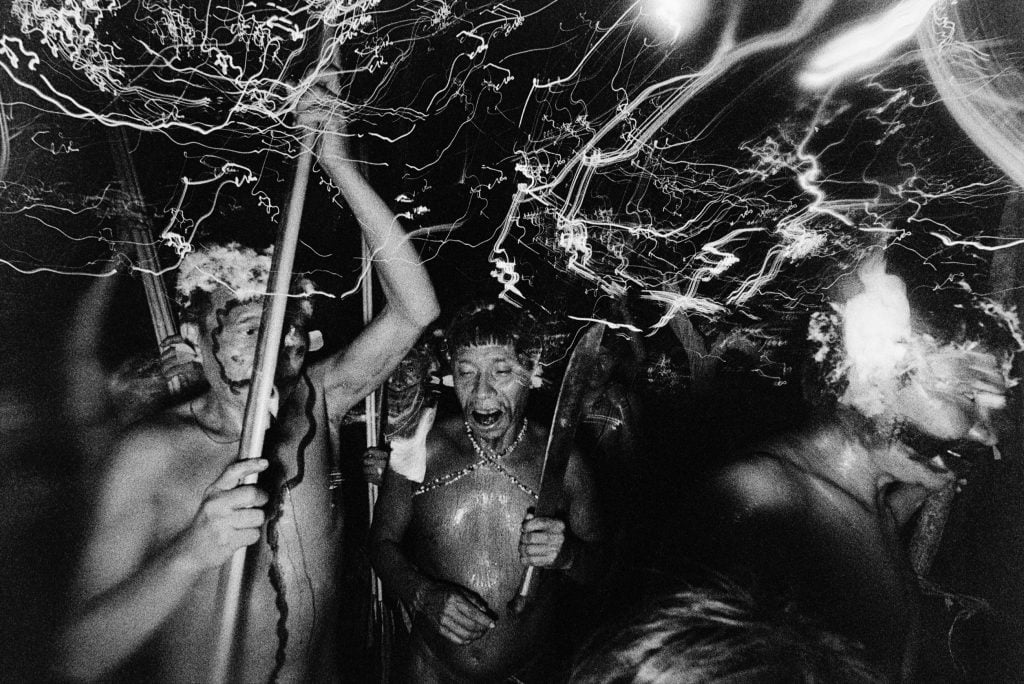
Guests from the Xaxanapi community enter the collective house of their Korihana thëri hosts for the inauguration of the reahu ceremony, Catrimani (1974). Artwork © Claudia Andujar. Collection of the artist.
Last week at the show’s preview, Nogueira was sitting on a bench in front of a grid of Andujar’s poignant portraits of the Yanomami people titled “Moving Identities.” She would often shoot a subject in natural light using an entire roll of film to zoom in on individuality. This is another reason Andujar’s images stand out—she isn’t depicting another culture as the “other,” but the people within. As is often the case in art, they also say a lot about the creator. “She lost her whole family in the Holocaust,” said Nogueira. “She escaped to Switzerland and then moved to Brazil. She was always trying to find a new home, which she eventually found within the Yanomami. Photography was a way to communicate, to get closer to people.”

Installation view of “Moving Identities.” Photo: Adam Reich, courtesy of the Fondation Cartier pour l’art contemporain.
Once you get past the paradise portion of the exhibition (which also features arresting videos made by Yanomami filmmaker Morzaniel Ɨramari), there is a gallery of Yanomami artwork. At first glance, some look like abstractions, but they’re parables of their complex belief systems.
There are also works by Sheroanawe Hakihiwe, who specializes in depicting his people’s “oral memory” and represented Venezuela at the 2022 Venice Biennale. The Shed is the first locale to feature Yanomami artists (the exhibition was previously held at the IMS (São Paulo), the Fondation Cartier (Paris), and the Barbican (London), among other venues.
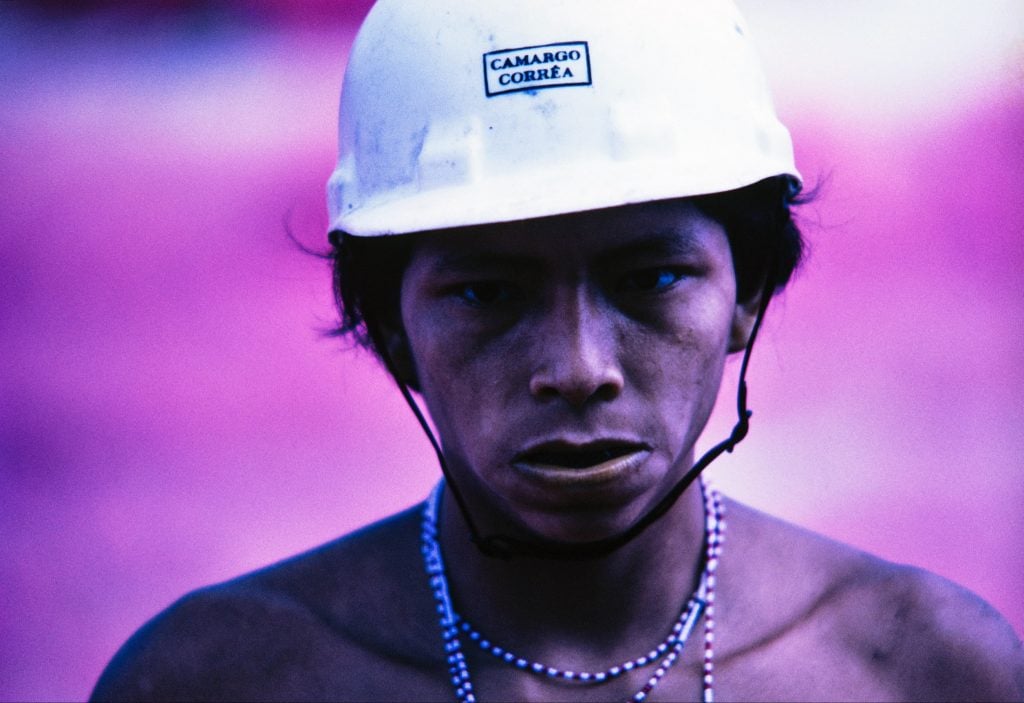
Nego Wakatha u thëri wearing a helmet from the construction company near the Perimetral Norte highway, Catrimani. Artwork © Claudia Andujar. Collection of the artist.
The viewer then careens into a world on fire, with glimpses of destruction and havoc wreaked on Indigenous bodies in the form of disease and violence. It can be hard to look at, let alone fathom. The tumult triggered Anjudar to pivot from protest artist to full-time activist. Nogueira hopes that the broader messages within the show reverberate.
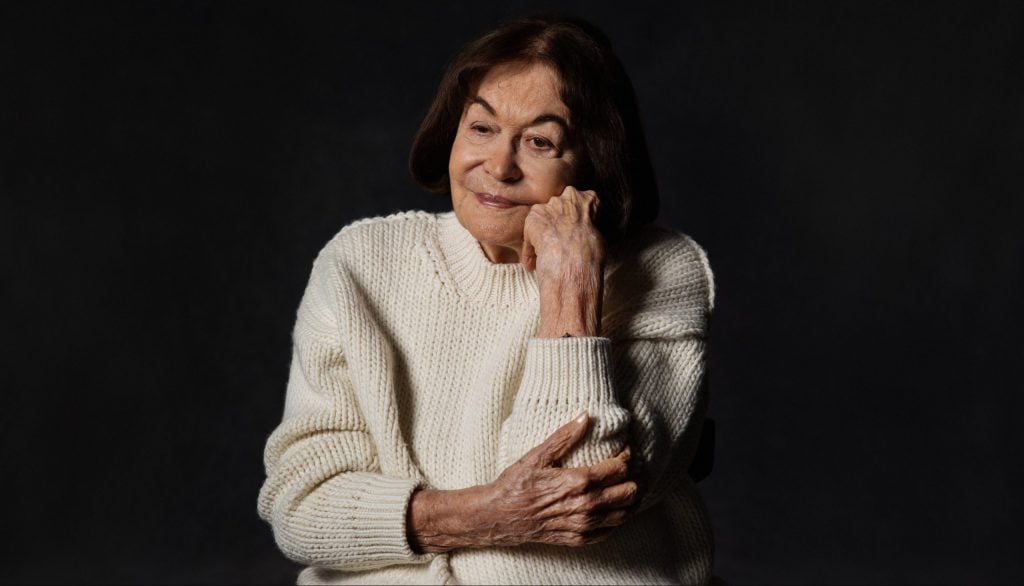
The artist and activist Claudia Andujar. Photo: Lewis Mirrett, courtesy of the Fondation Cartier pour l’art contemporain.
“This is not only a story about something that’s going on in the middle of the Amazon,” he said. “This is a fight for respect of human diversity. This is a fight for social justice that corresponds to our own survival and for the survival of other Indigenous peoples all over the world.”